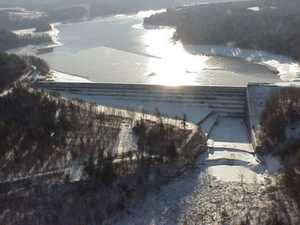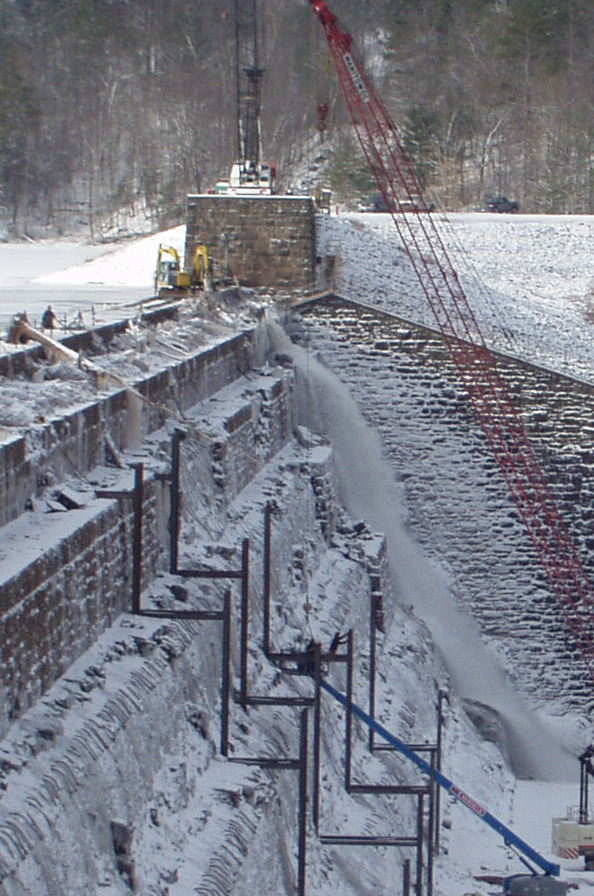My parents live in the flood plain of the Schoharie River and the entire Schoharie valley has been consumed by recent disclosure of possible catastrophic failure of the Gilboa Dam. The Gilboa Dam Information Web site at http://www.gilboadaminfo.com/index.htm offers a near real time water volume chart which indicates at what stage (1132 feet) the evacuation should begin as well as background information on the problem and a photogallery of the ongoing repairs.
The City of New York operates the Schoharie Reservoir, impounded by the Gilboa Dam on the Schoharie Creek. Reservoir capacity is about 20 billion gallons. The dam is 2,000 feet long and 182 feet high. The reservoir is 5.8 miles long and has a maximum depth of 150 feet. The dam was completed in 1926. The river floods periodically due to weather conditions. Floods were regular and severe for hundreds of years before construction of dams.
In 1997 the city DEP made renovation of this dam a No. 1 priority and planned to start the work in 2002-2004. In 2001, the New York City Department of Environmental Protection analyzed the possibility of a major dam failure and had “dam break analysis” maps prepared showing the projected extent of flooding. In 2003 a city engineer co-authored a paper titled “Stability Analysis and Interim Safety Improvements Gilboa Dam Spillway, Schoharie Reservoir, New York,” presented at the U.S. Society of Dams conference in South Carolina. On 25 October 2005, the city issued a Public Advisory stating “recent investigations reveal that safety factors associated with modern engineering practices are not met by the Dam in its present state.” City officials met with local officials and said they would make emergency repairs in the spring of 2006.
The New York Power Authority operates the Blenheim-Gilboa Reservoir with a smaller dam 5.3 miles downstream from the city’s Schoharie Reservoir. Failure of the Gilboa Dam is projected to impact the Blenheim Gilboa Reservoir in 15 minutes.
Thousands of people live in the Schoharie Valley downstream of the dam and many fear dam failure. Rumors circulated concerning the dam’s condition and stability, and the degree of danger and severity of flooding likely in event of a major dam failure. Emergency response preparations commenced. Public meetings were held on the issue. Residents and federal state and local officials howled in protest and many demanded work begin sooner. Residents demanded immediate drawdown and suggested using siphons. The city balked but eventually agreed to install siphons.
Preliminary repair work began December 15, 2005, and the emergency repairs began on December 19 with the installation of a floating debris boom to keep flotsam from the work area. On January 7, D.A. Collins Inc. started installation of the siphons. Work has been interrupted by high water. Cutting a notch in the dam to lower its level during the repair period is under contract. Meanwhile the overall $200 million Gilboa Dam project has been delayed by rain. The short term fixes are supposed to be finished in September with a complete rehabilitation beginning in 2008. The project is expected to take five years, testing residents’ nerves along the way.
A new notch is cut into the dam on Saturday 11 Feb to lower water levels.


